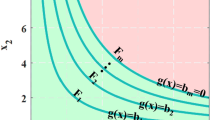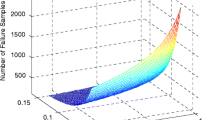Abstract
In the traditional single particle fault injection experiments (SPFIE), when the target configuration register for fault injection is selected, the state of the configuration register is inverted directly without considering the actual operating environment of the target design, such as the distribution of particles around the orbit, the crash frequency of particles on the target design and the electronic characteristics of the design itself. So, the soft failure rate obtained based on this method cannot properly reflect the actual situation of the target design in a specific space environment. To address this issue, this work presents a fault injection signal generation method considering both particle distribution in space and the circuit electronic characteristics. Because the real particle distribution data is less and the information contained is single, a novel data expansion method based on the Gaussian cloud model is proposed. This method makes full use of small sample information and the expanded data using this method maintain the same distribution as the original sample data with more information. We take the particle data collected by the detector mounted on Tiangong-1 as the simulation scenario to validate this novel expansion method. Simulation results demonstrate the feasibility and effectiveness of the proposed expansion method. The SPFIE using the proposed fault injection signal generation method improves the authenticity of the experiment results and the SRAM FPGA design soft failure rate estimated according to experiment result is closer to the real situation in the space environment.












Similar content being viewed by others
References
Juan J, Rodríguez-Andina MD, Valdés-Peña, and María J. Moure, (2015) Advanced Features and Industrial Applications of FPGAs-A Review. IEEE Trans Industr Inform 11(4):853–864
Battezzati N, Sterpone L, Violante M (2011) Reconfigurable Field Programmable Gate Arrays for Mission-Critical Applications. Springer, London
Villalta I, Bidarte U, Gómez-Cornejo J, Lázaro J, Cuadrado C (2015) Dependability in FPGAs, a Review. In: Proc of 2015 Conference on Design of Circuits and Integrated Systems (DCIS), pp 1–6
Tamimi S, Ebrahimi Z, Khaleghi B, Asadi H (2019) An Efficient SRAM-Based Reconfigurable Architecture for Embedded Processors. IEEE Trans Comput Aided Des Integr Circuits Syst 38(3):466–479
Wang C (1998) The influence of single-particle effect on the reliability of satellite space operation. Semicond Inf 35(1):1–8
He W, Wang Y, Xing K, Yang J (2016) Modeling and Experimental Study of Soft Error Propagation Based on Cellular Automaton. Math Probl Eng 2016:1–11
Luo W, Liu J, Li Z, Song J (2020) Efficient Triangular Interpolation Methods: Error Analysis and Applications. IEEE Antennas Wirel Propag Lett 19(6):1032–1036
Ashraf I, Hur S, Park Y (2017) An Investigation of Interpolation Techniques to Generate 2D Intensity Image from LIDAR Data. IEEE Access 5:8250–8260
Akins RB, Tolson H, Cole BR (2005) Stability of response characteristics of a Delphi panel: application of bootstrap data expansion. BMC Med Res Methodol 5(1):37–42
Peter AD, Eulogio PI, Juan JE (2015) The total bootstrap median: a robust and efficient estimator of location and scale for small samples. J Appl Stat 42(6):1306–1321
Marieke ET, Cajo JF, Ter B (2008) Bootstrap confidence intervals for principal response curves. Comput Stat Data Anal 52(4):1837–1849
Wu yun-jie, Wang Jianmin, Yang Wenguang, (2016) Approach of credibility evaluation for testing system with small samples. J Beijing University Aeronautics Astronautics 42(9):1911–1917
Zhang Q, Yuan Q, Zeng C, Li X, Wei Y (2018) Missing Data Reconstruction in Remote Sensing Image with a Unified Spatial-Temporal-Spectral Deep Convolutional Neural Network. IEEE Trans Geosci Remote Sens 56(8):4274–4288
Zhixin J, Hongbin Z, Anmin Xi (2011) Expanding reliability data of NC machine tool based on neural network. J Jilin University (Eng Technol Ed) 41(2):403–407
Zheng H, Long F, Suge Y, Liquan L (2009) A Monte Carlo-based Control Signal Generator for Single Event Effect (SEE) Fault Injection. In: Proc of 2009 European Conference on Radiation and Its Effects on Components and Systems, pp 247–251
Zhi-hu YU, Yu-feng QI (2010) A Data Filling Algorithm Based on Cloud Model. Comput Technol Dev 20(12):34–36
Wang J, Wang J (2020) Credibility evaluation for small sample data based on Grey system theory and cloud model. J Grey Syst
Raj D, Gupta A, Garg B, Tanna K, Rhee FC (2018) Analysis of Data Generated from Multidimensional Type-1 and Type-2 Fuzzy Membership Functions. IEEE Trans Fuzzy Syst 26(2):681–693
Wang Y, Zheng L, Zhang H, Zheng WX (2020) Fuzzy Observer-Based Repetitive Tracking Control for Nonlinear Systems. IEEE Trans Fuzzy Syst 28(10):2401–2415
Li HX, Wang PZ (1994) Fuzzy mathematics.2nd ed. Beijing, China: National Defense Industry Press, ch.1, sec. 5, pp.20–21
De-yi Li, Chang-yu L (2004) On the Universality of the Normal Cloud Model. Eng Sci 6(8):28–34
Zhou S, Shi-qian X (2001)Probability theory and mathematical statistics.3rd ed. Beijing, China: Higher Education Press, ch.2, sec.4, pp 61–62
Li DY, Du Y (2014) Artificial intelligence with uncertainty,2nd ed. Beijing, China: National Defense Industry Press, ch.2, sec.2, pp 44–45
Ling-zhou Q (2014) Study on Extraction Technology of SRAM SEU Effect Parameters Based on SOI CMOS, Master's Thesis, Xidian University. Xi’an, China
Author information
Authors and Affiliations
Corresponding author
Additional information
Responsible Editor: C.-W. Wu.
Publisher’s Note
Springer Nature remains neutral with regard to jurisdictional claims in published maps and institutional affiliations.
Rights and permissions
About this article
Cite this article
Wang, M., Wang, J., Wang, J. et al. Single Particle Fault Injection Signal Generation Method Using Gaussian Cloud Model. J Electron Test 37, 127–140 (2021). https://doi.org/10.1007/s10836-021-05928-2
Received:
Accepted:
Published:
Issue Date:
DOI: https://doi.org/10.1007/s10836-021-05928-2




